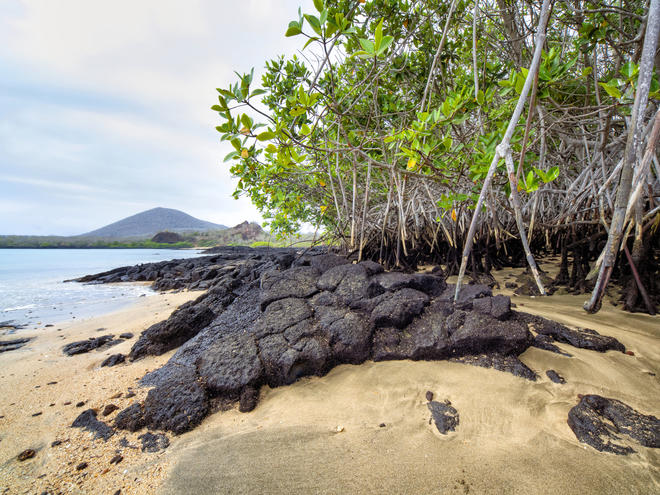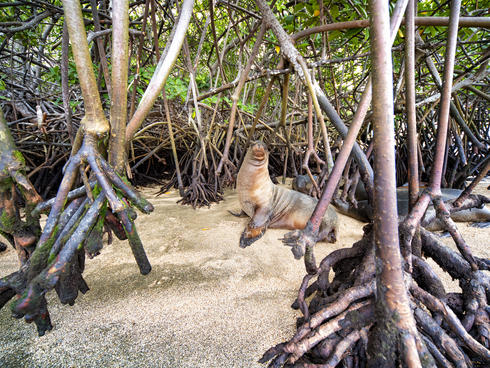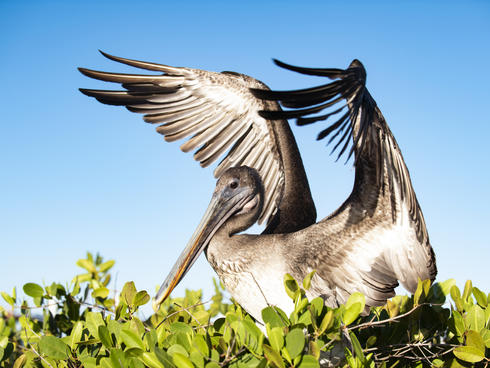
In the discussion about climate change, coral reefs take a starring role — their importance and endangerment has been widely reported. But far less attention has been paid to a similar and equally important type of biome that is also increasingly at risk: Mangrove forests.
A recent report from the Global Commission on Adaptation and World Resources Institute reveals what an essential role these underappreciated ecosystems play in addressing the impacts of climate change. Every dollar spent protecting mangroves could yield upwards of five dollars’ worth of climate adaptation benefits, which includes things like maintaining access to food resources and securing protection from violent storm surges. That’s a higher cost-benefit ratio than improving agricultural processes — a far more widely recognized need vis-à-vis climate adaptation.


The value of mangroves
Mangroves — tangled groups of some 70 species of salt-tolerant trees — grow in the briny, waterlogged soils of tropical and subtropical shorelines. These ecosystems serve as nurseries for many aquatic animals and are home to an astounding number of other species, including native birds. They provide essential storm protection and nourishment for coastal-dwelling human communities.
Mangroves are also powerful carbon sinks: They store more carbon per acre than any other forest variety as a result of carbon being locked away in the soil underneath their roots. Blue carbon — that is, carbon captured and stored in coastal ecosystems — can be kept safe in mangrove forests for thousands of years if they are left undisturbed. Experts believe that mangroves store as much as four times more carbon than tropical forests do.
Why mangroves need protection
Coastal development, agriculture, and aquaculture are destroying mangroves at an alarming pace — in some countries like India and Vietnam, more than half of these forests have been lost. They are vital for millions of people and thousands of species around the world, yet they’re being uprooted so fast that a child born today might never get the chance to see one outside of a national park or the pages of a book.
The report puts a fine point on the value of savings these forests: The protection that mangroves provide against coastal flooding helps avoid more than $80 billion in losses and keep 18 million people safe every year. They also offer some $40–50 billion annually in benefits tied to fisheries, forestry, and recreation.
All these benefits make preservation and restoration of these forests crucial to our survival: The benefit of mangrove restoration efforts is at least 10 times the cost. And that cost is far lower than other solutions to problems such as sea level rise and storm protection. According to the report, engineering and building structures to serve these same functions are two to five times more expensive than restoring and protecting mangrove forests. And structures don’t simultaneously store carbon and provide habitat for teeming wildlife.
The data in the report reinforce the urgency of working toward increasing global mangrove habitat by 20 percent by 2030, a goal set out by the Global Mangrove Alliance — a collaboration among WWF, Conservation International, the International Union for the Conservation of Nature (IUCN), Wetlands International, and The Nature Conservancy.
What’s left of these unprotected, critically important forests may disappear within a century if we don’t take decisive action, and the extent of the benefits they offer makes it clearer than ever how urgently we must work for a different outcome.
Enviroshop is maintained by dedicated NetSys Interactive Inc. owners & employees who generously contribute their time to maintenance & editing, web design, custom programming, & website hosting for Enviroshop.
